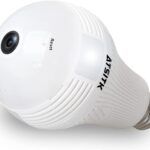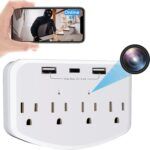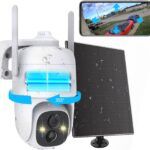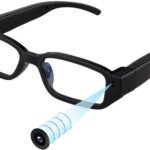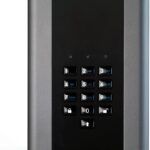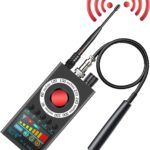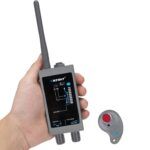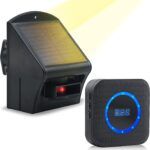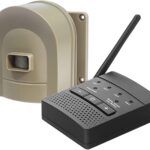Surveillance cameras come with different resolutions. Our shop features a wide selection of hidden cameras with different recording resolutions. You can filter these products by resolutions on these links:
720p – High Definition
720p resolution video footage is a popular choice for security cameras due to its balance between image quality and storage space. It offers a resolution of 1280 x 720 pixels, which provides a clear image while still being more efficient in terms of storage space compared to higher resolution formats.
1080p – Full High Definition
1080p resolution is one of the most widely used video formats in the security camera industry today which offers a resolution of 1920 x 1080 pixels, providing a clear and detailed image suitable for most surveillance purposes.
2K – Quad High Definition
2K resolution video footage is a step up from the traditional 720p and 1080p resolution formats. It offers a resolution of 2560 x 1440 pixels, providing a higher level of detail and clarity. This increased resolution makes 2K video footage ideal for security cameras that need to capture fine details, such as license plate numbers or facial features.
4K – Ultra High Definition
4K resolution video footage is the latest and highest standard in video resolution technology. It offers a resolution of 3840 x 2160 pixels, providing four times the detail and clarity of traditional 1080p resolution. This level of detail is ideal for security cameras that need to capture intricate details, such as license plate numbers or facial features from greater distances.
Which resolution is best?
For quality, 4K is no doubt the highest resolution and will capture even the tiniest of details. However, you must take into account storage space. 1080p video footage can take up to around 130 MB of storage space, whereas a minute of 4K footage at 30 fps can take up to 400 MB of storage space.
Therefore, if you are shooting 4K video, you will need far more storage space to store your footage compared to shooting in 1080p. For hidden cameras high resolution such as 4K can become a problem as many will record footage on SD cards which can have very limited storage.
Even if you are streaming footage to your phone or computer, you must take into account available bandwidth. Your home or mobile connection might not be able to handle uploading 6-7 MB/second required for 4K, or it could significantly slow down your internet connection.
For most covert surveillance purposes a 1080p camera will be more than sufficient.
Camera Resolutions FAQ
- What is the difference between 720p and 1080p surveillance cameras?
Surveillance cameras that have a resolution of 720p have 1280 horizontal pixels and 720 vertical pixels, whereas those with 1080p have 1920 horizontal pixels and 1080 vertical pixels. This means that 1080p cameras can capture more details and produce higher quality images than 720p cameras.
- What is the difference between 1080p and 4K surveillance cameras?
4K cameras have a resolution of 3840 horizontal pixels and 2160 vertical pixels, which is four times the resolution of 1080p cameras. This means that 4K cameras can capture more details and produce much higher quality images than 1080p cameras.
- How much storage space does a 1080p surveillance camera use?
A 1080p surveillance camera typically uses between 1 and 2 gigabytes of storage space per hour of recorded footage. This can greatly depend on the video compression format used. A 4K camera typically uses between 7 and 10 gigabytes of storage space per hour.
Take a look at our custom-build Video Storage Space Calculator to get an estimate on how much storage space you need based on resolution, frame rate, and compression format of your camera.
- Can lower resolution surveillance cameras be upgraded to higher resolution?
No, lower resolution surveillance cameras cannot be upgraded to higher resolution. A resolution is determined by your camera’s lens which is typically not easy to replace. Keep in mind most hidden cameras will allow you to choose downscale resolution. This means if you purchase a 2K camera you will in most cases be able to also choose to downscale to 1080p or 720p to save storage space.
- Does higher resolution mean a greater field of view?
The field of view of a surveillance camera refers to the area that the camera can capture. It is determined by the focal length of the lens and the size of the image sensor. This has nothing to do with resolution. Take a look at our lens angle tool for a preview of field of view your camera can record.
- Can higher resolution surveillance cameras consume more power than lower resolution ones?
Higher resolution surveillance cameras can consume more power than lower resolution ones, but the power consumption is not directly proportional to the resolution. The power consumption of your camera depends on several factors, such as the image sensor type, lens, and other features. For example, cameras with larger image sensors or those that use infrared lighting may consume more power.
However, newer high-resolution cameras are designed to be energy-efficient, and many have power-saving features such as motion detection or automatic shut-off. You need to consider the power requirements of the camera when selecting a power source, such as a battery or AC power supply, to ensure that it can provide sufficient power for the camera’s needs.
- Can I downscale resolution on a security camera?
Yes, it is possible to downscale the resolution on a security camera. Most modern cameras come with software that allows you to adjust the resolution, bitrate, and other settings. If you need to downscale the resolution of your security camera, it is important to make sure that the software you are using supports this feature. Some hidden cameras may not allow you to adjust the resolution or may have limited options for adjusting the settings. Additionally, lowering the resolution of a camera can affect the field of view, so you may need to adjust the camera’s position or angle to ensure that it covers the area you want to monitor.
- Why is there a difference in video and photo resolution on same camera?
There is often a difference in the video and photo resolution on the same MP camera because video and photo capture are different processes.
When taking a photo, the camera captures a single still image with a high resolution, whereas when recording a video, the camera needs to capture a series of images (frames) in quick succession to create the illusion of motion. The video resolution, therefore, is determined by the size of each of these individual frames.
Additionally, the aspect ratio can also affect the difference in video and photo resolution. Photos are usually captured in a 4:3 or 3:2 aspect ratio, while videos are often recorded in a widescreen 16:9 aspect ratio. This means that the video resolution may need to be reduced to fit the widescreen aspect ratio, resulting in a lower resolution compared to photos.
Generally, a 20MP camera produces photos with a resolution of 5472 x 3648 pixels, which is a 3:2 aspect ratio. In terms of video resolution, a 20MP camera can record 4K video at 3840 x 2160 pixels or Full HD video at 1920 x 1080 pixels (both 16:9 aspect ratio).
Also worth noting is that cameras with photo snapshot feature will take still photos in higher resolution than video footage. You may want to take a look at our Photo Resolutions Calculator to determine highest photo resolution based on your camera lens.


